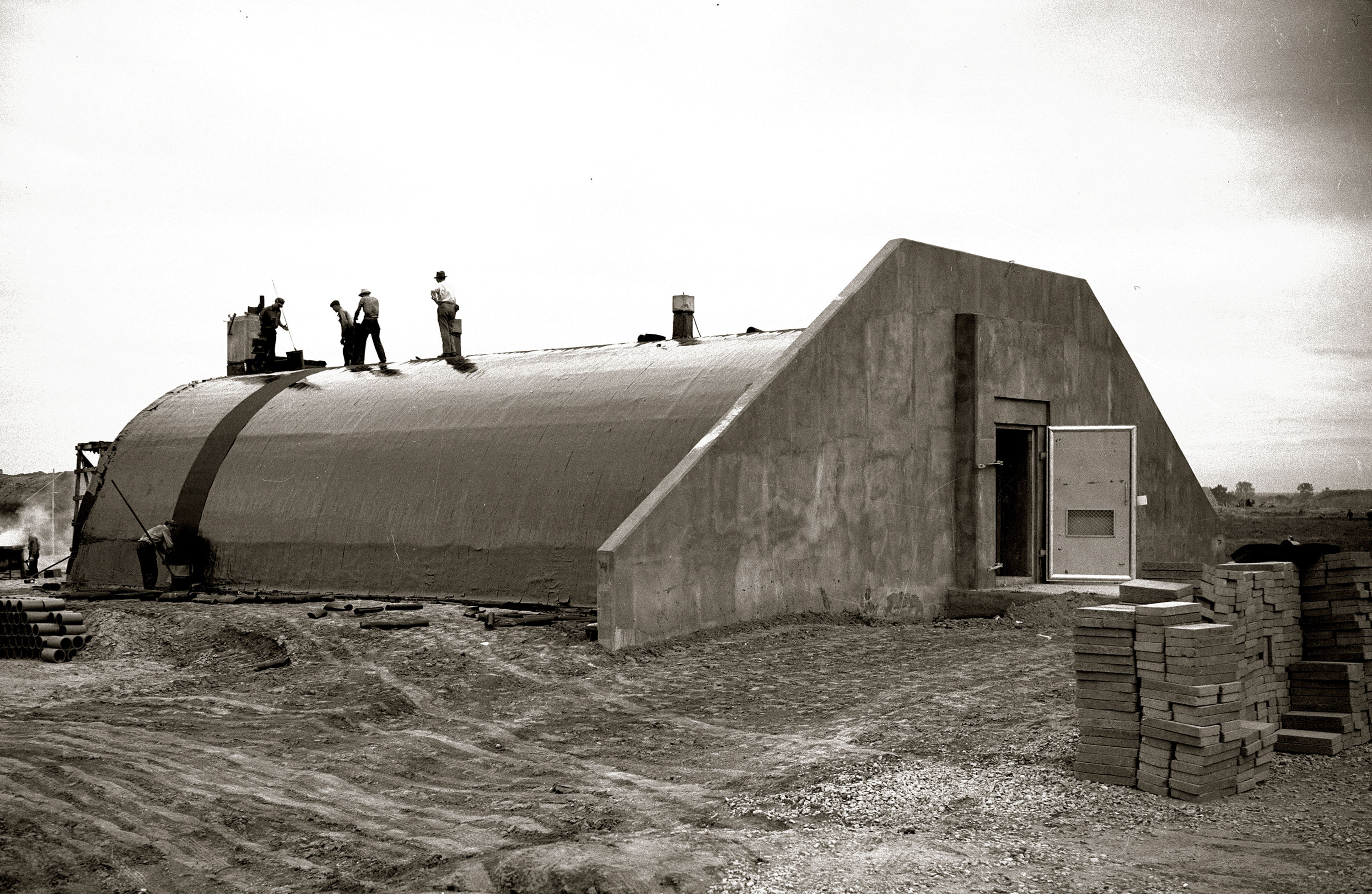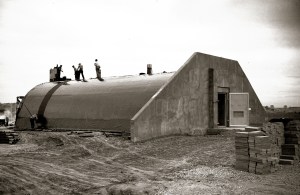
Concrete Bunker at NASA’s Plum Brook Station
One of 99 concrete bunkers used to store munitions at the Plum Brook Ordnance Works near Sandusky, Ohio, which later became the National Aeronautics and Space Administration’s (NASA) Plum Brook Station. During World War II the ordnance works produced trinitroluene (TNT), dinitrotoluene (DNT), and pentolite which were crated and shipped to an arsenal in Ravenna, Ohio. There, the explosives were packed into shells and sent to Allied forces overseas. Plum Brook was the third largest producer of TNT during World War II. These concrete and reinforced steel structures were covered with earth and vegetation to shield them from view. The bunkers were designed to explode upward, not sideways, were staggered, and placed 400 feet apart on each side and 800 feet from the next row to prevent a chain reaction. Plum Brook Ordnance Works was shut down immediately after World War II and remained vacant for the next ten years. NASA’s predecessor, the National Advisory Committee for Aeronautics (NACA), acquired 500 acres of the site in 1955 to build a nuclear test reactor. By 1963, the agency had acquired the entire 9000 acres from the Army, including the 99 bunkers. Plum Brook Station contained over 30 test facilities at its peak in the late 1960s. Today there are four major facilities in operation. The bunkers function today as natural climate-controlled warehouses for federal records.
- X



























